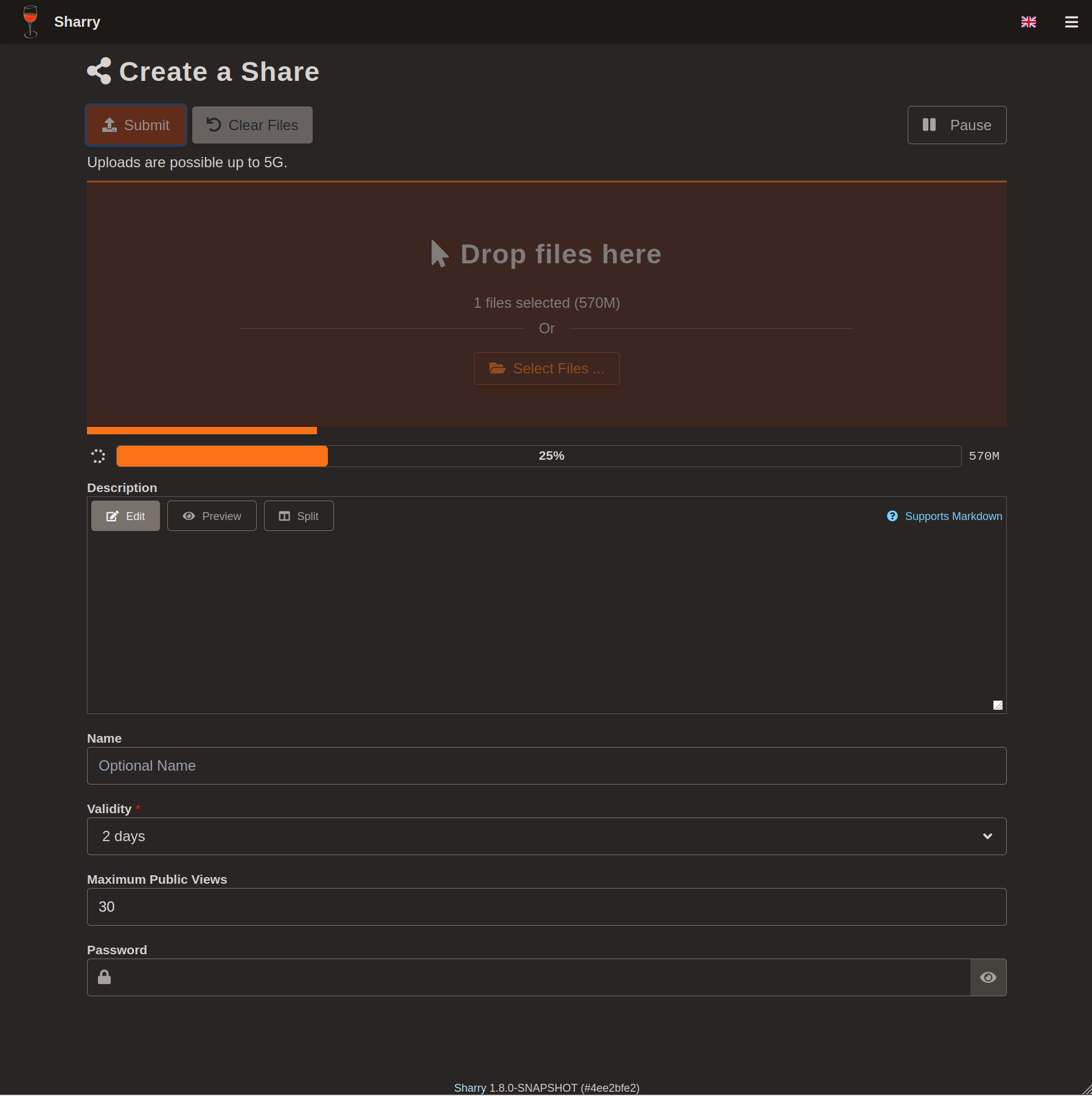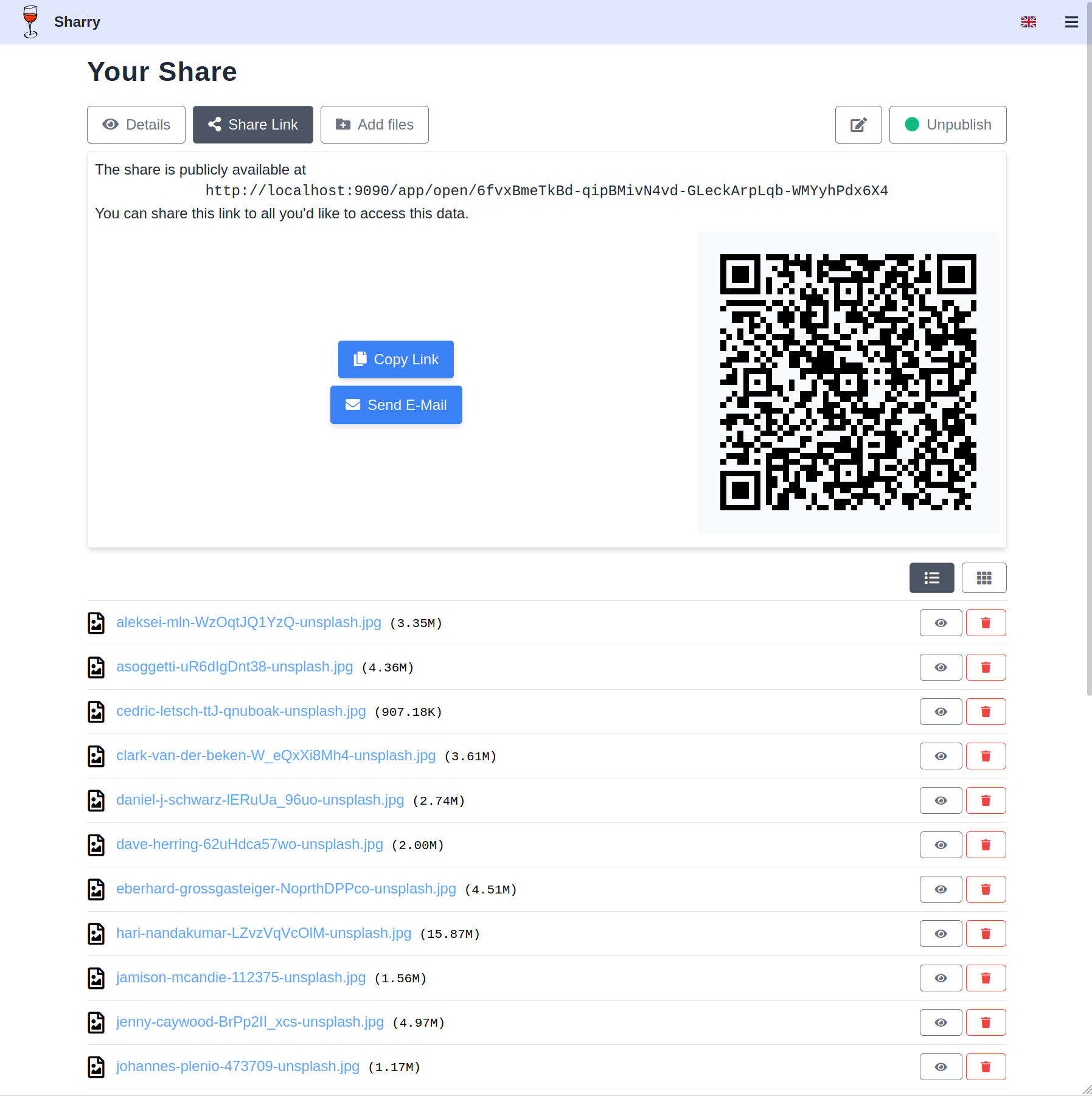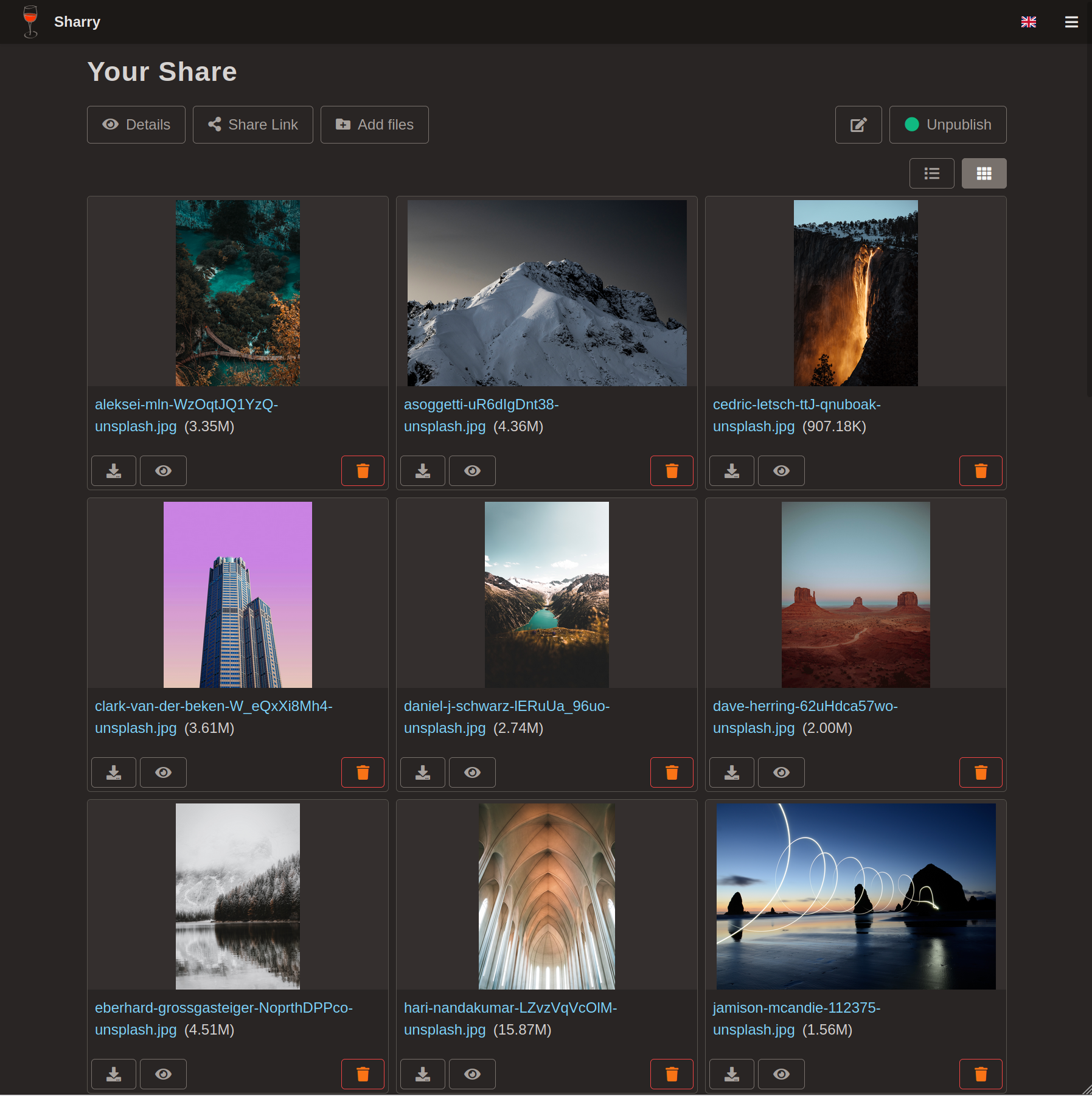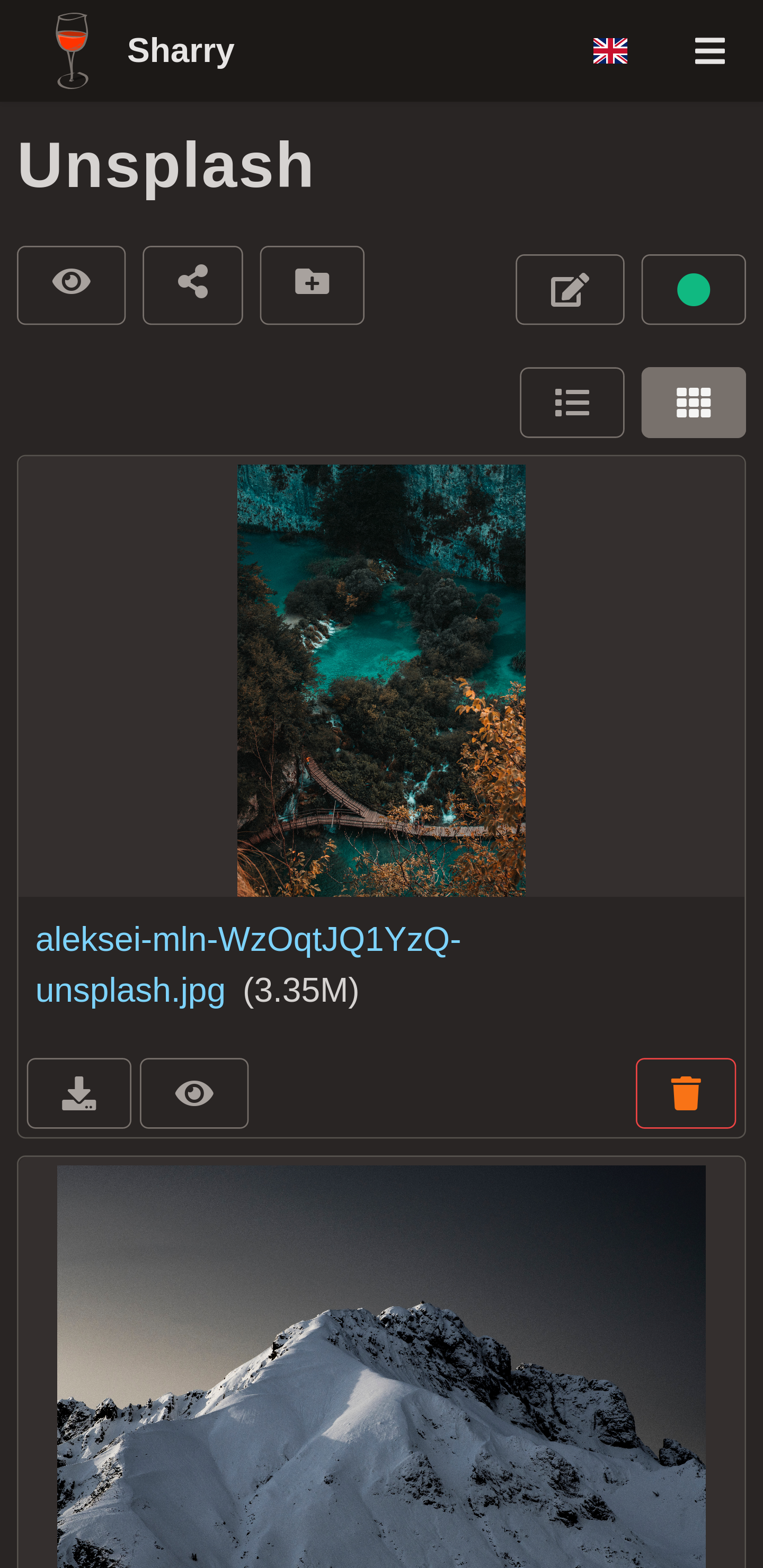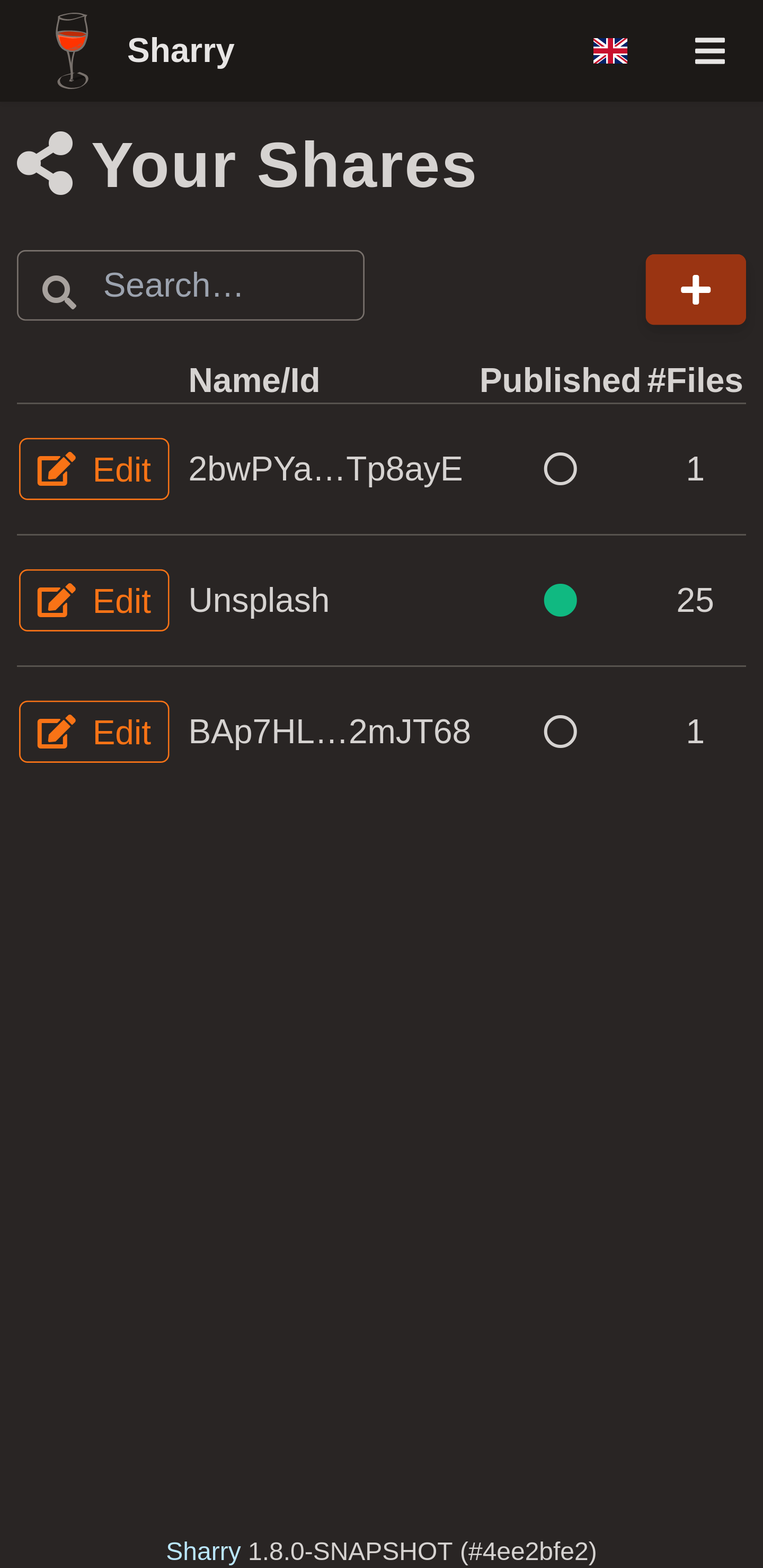Sharry
Sharry allows to share files with others in a simple way. It is a self-hosted web application. The basic concept is: upload files and get a url back that can then be shared.
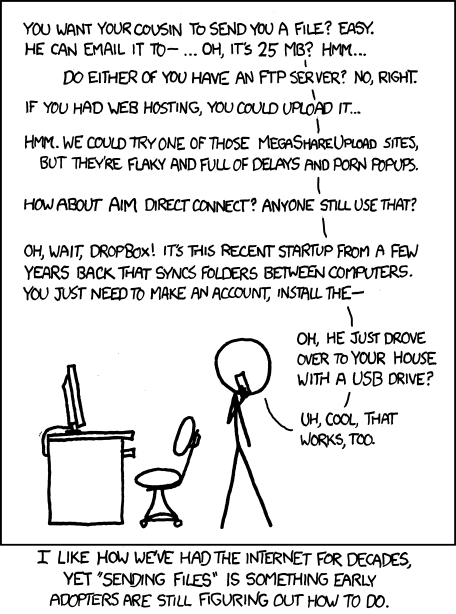
How it works
Authenticated users → others
Authenticated users can upload their files on a web site together with an optional password and a time period. The time period defines how long the file is available for download. Then a public URL is generated that can be shared, e.g. via email.
The download page is hard to guess, but open to everyone.
Others → Authenticated users
Each registered user can maintain alias pages. An alias page is behind a “hard-to-guess” URL (just like the download page) and allows everyone to upload files to the corresponding user. The form does not allow to specify a password or validation period, but a description can be given. The user belonging to the alias can be notified via email. Alias pages can be disabled or deleted any time.
Install
- Install the provided
debfile at your debian based system. - Download provided zip
file and run the script in
bin/, as described here. - Using the nix package manager as described here. A a NixOS module is available, too.
- Using Docker, as described here.
Documentation
Please see the documentation site.
Screenshots
Contributions/Support
Feedback and other contributions are very welcome! You can open an
issue for questions,
problems and other feedback; or make a mail to eikek [at] posteo.de.
I'll try to answer in time.
If you find this project any useful and want to support it via other means, giving a ⭐ is always encouraging and much appreciated. You can also support activity by donating via liberapay or paypal.
Thank you so much!
Technical
Sharry implements the tus protocol and the webapp uses it to send files to the backend server. This allows to send even large files reliably through http. For example, even if the connection drops in the middle of an upload and you upload the same file again later, it starts the upload process from the last received chunk of data.
The backend is written in Scala using a pure functional style on top of great typelevel libraries like cats and fs2. The frontend is written in elm.
License
This project is distributed under the GPLv3+

